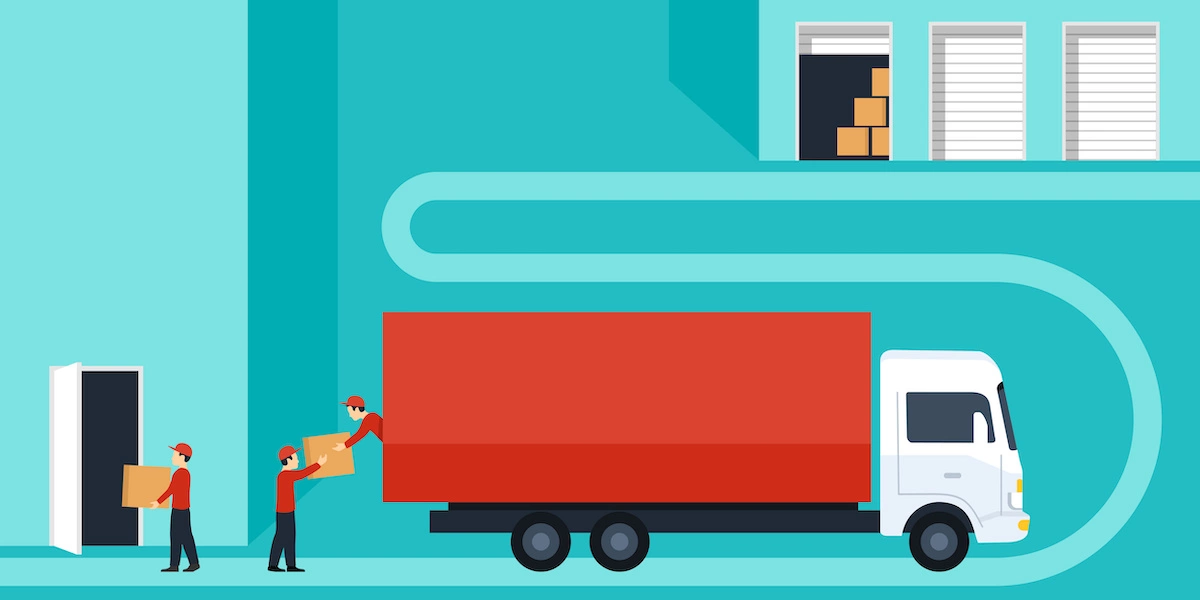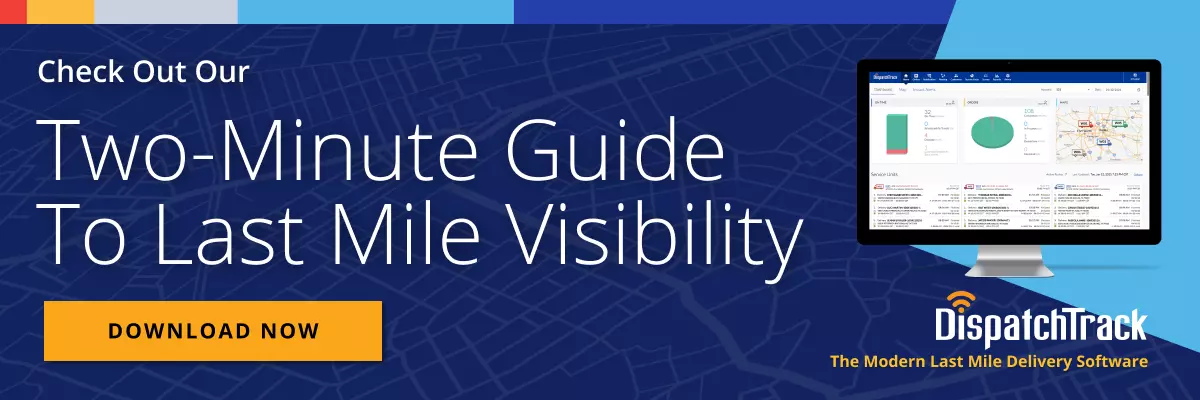In the modern supply chain, the last mile is generally the least efficient, often accounting for more than a quarter percent of total delivery costs. Several factors contribute to this. Deliveries to consumers are often made to homes that are long distances away from one another, increasing costs and lengthening the delivery time. Plus, the growing congestion in urban areas also slows deliveries.

This is even more complicated if the customer isn’t at home to receive the delivery, or the recipient business lacks the appropriate equipment to unload the order. Online retail association IMRG estimates that failed e-commerce deliveries cost the U.S. economy over $1 billion each year.
So what can you do to improve last-mile delivery success? One strategy is to leverage last mile logistics tracking to ensure that orders reach customers on time and are delivered consistently on every delivery run.
The Basics of Last Mile Logistics Tracking
The supply chain needs to be fully transparent, especially in the last mile. Dispatchers and fleet managers can use final mile carrier tracking data to make data-driven decisions in unexpected or unplanned circumstances. In addition to identifying pain points in workflows, visibility can also help fleet managers and operators cope with them more quickly and more effectively in the moment.
Dispatchers and fleet managers who can track vehicles, drivers, and order statuses in real-time can make the necessary adjustments according to drivers’ locations, customers’ requests, and current constraints. Businesses can also use last mile visibility to provide more individualized delivery services to respond to consumers’ ever-increasing expectations. The question is: how?
When it comes to finding a way to track deliveries more effectively, utilizing last mile management software to improve visibility offers benefits to both businesses and customers.
The kinds of real-time tracking and analytics features offered by last mile logistics tracking software can significantly improve visibility into fleet operations. Delivery stakeholders can see when the delivery has started, the estimated time of arrival (ETA), the location of the order, as well as whether the driver is on schedule to meet the delivery window.
Additionally, the right solution improves visibility across all departments of your organization by integrating with multiple systems such as third-party logistics (3PL) software, warehouse management systems, GPS tools, inventory management systems, order management systems, and much more. Through seamless integration of disparate IT infrastructure, businesses can achieve a high level of system interoperability, enabling them to have a holistic view of how delivery operations are conducted throughout the organization.
Improving Last Mile Logistics Tracking
In the modern delivery sector, last mile tracking and visibility are changing the game in many ways, including enhancing customer satisfaction and cutting operational costs. Here’s how you can improve last mile delivery with the help of a robust last mile delivery management solution.
Utilize advanced algorithms
Delivering on time, every time for your customers requires highly developed algorithms. Invest in a solution that uses the latest last mile tracking software to calculate the most efficient delivery and pickup sequences with hyper-accurate travel and service times, and allocate loads according to vehicle and driver requirements. In this way, delivery assignments and schedules are optimized to ensure on-time deliveries, and maximize fleet utilization and routing effectiveness.
Give customers a choice
With the right solution, customers can select the delivery window that works best for them to improve the chances of first-attempt delivery. A customer can ensure that someone will be at home to receive the order if you provide them with a range of time windows at the point of purchase or shortly thereafter. Narrowing the time slots down to, say, two hour increments will allow you to satisfy your customers better. After all, the ideal delivery method is to have orders delivered at the time and location customers prefer.
The use of last mile planning systems that provide time windows at or just after the point of purchase and allow customers to modify their delivery schedule up until the delivery date, gives them more control and increases the chances of receiving their order on time.
Dynamic routing
Order mixes are going to be different every day, and there will always be last minute changes, which means your fulfillment system must continuously re-optimize driver assignments and delivery schedules as new orders come in. A robust solution with dynamic routing features will take into consideration available resources, delivery areas, and existing deliveries already confirmed, before analyzing and evaluating potential delivery times within the requested time windows
Using the same system to plan collections, services, etc. maximizes operational efficiency and ensures a consistent and exceptional delivery customer experience. Why? Because customers don’t just want to be able to track deliveries—they want to track deliveries that are going well.
Order tracking
Orders must be tracked from placement to delivery to ensure all required components are progressing as planned. Automated communication and proactive messaging keep the customer informed during this process.
Throughout the order lifecycle, send updates via SMS or email so that the customer is kept informed and can see the status of their delivery at any time. The result here is a reduction in customer service calls and an increase in customer satisfaction. Ideally, you’d also be able to provide a dedicated, real-time tracking portal so that they can see up-to-minute delivery data whenever they want.
These capabilities aren’t just for improving customer satisfaction. They also give your internal teams the visibility they need to spot exceptions early on in the process and take quick and effective steps to mitigate them.
Use electronic proof of delivery
Electronic proof of delivery is an integral part of the order fulfillment process. This empowers your team to receive confirmation of successful deliveries and record information such as notes, photographs, and signatures so delivery issues can be addressed promptly.
In the end, the absence of last mile logistics tracking hinders fleet managers from acting fast enough to prevent costly mistakes and makes it harder to make data-driven decisions. In contrast, by improving last mile tracking and visibility, you can decrease friction, increase operational efficiency, improve customer satisfaction, and be more prepared for unexpected events. The combination of all of these factors helps to lower costs and boost revenue.
